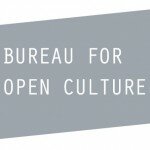FRITZ HAEG works between the urban ecology initiatives of Gardenlab, including Edible Estates; the domestic social activities of Sundown Salon and Sundown Schoolhouse; the designs and scores of Fritz Haeg Studio, including occasional buildings and even parades (though his currently preferred clients are animals); and other various combinations of building, composting, cultivating, dancing, designing, exhibiting, gardening, housekeeping, organizing, talking, teaching, and writing. His home base since 2001 is part subterranean and part geodesic dome in the hills of Los Angeles.
Haeg studied architecture in Italy at the Istituto Universitario di Architettura di Venezia and Carnegie Mellon University. He is a Rome Prize fellow in residence at the American Academy in Rome from 2010-2011, a frequent MacDowell Colony Fellow, and nominated for National Design Awards. He has variously taught in architecture, design, and fine art programs at Princeton University (2012), California Institute of the Arts, Art Center College of Design, Parsons School of Design, and the University of Southern California. Haeg has produced and exhibited projects at Tate Modern; the Whitney Museum; The Guggenheim Museum; SALT Beyoğlu, Istanbul; The Aldrich Contemporary Art Museum; San Francisco Museum of Modern Art; Casco Office of Art, Design and Theory, Utrecht; Mass MoCA; the Institute of Contemporary Art, Philadelphia; the Wattis Institute; the Netherlands Architecture Institute; The Indianapolis Museum of Art; and the MAK Center; and the Center for Advanced Visual Studies at MIT, among other institutions. “The Sundown Salon Unfolding Archive” (Evil Twin Publications) was released in 2009, the expanded second edition of “Edible Estates: Attack on the Front Lawn” (Metropolis Books) in 2010, and “Roma Mangia Roma” will be released by Nero Publications in 2011. www.fritzhaeg.com
 Julie Ault
Julie Ault
Julie Ault is a New York based artist and writer who independently and collaboratively organizes exhibitions, publications, and multiform projects. She often assumes curatorial and editorial roles as forms of artistic practice. Her work emphasizes interrelationships between cultural production and politics and frequently engages historical inquiry. Upcoming projects include “No-Stop City High-Rise: A Conceptual Equation,” in collaboration with Martin Beck for the 29th Bienal de São Paulo, and recent work includes collaborating with Danh Vo on the publication Where the Lions Are, (Basel Kunsthalle, 2009). Ault is the editor of Show and Tell: A Chronicle of Group Material (Four Corners Books, 2010), Alternative Art New York, 1965-1985 (University of Minnesota Press, 2002), Felix Gonzalez-Torres (steidl/dangin, 2006), and is the author of Come Alive! The Spirited Art of Sister Corita (Four Corners Books, 2006).
 Pablo Helguera
Pablo Helguera
Pablo Helguera (Mexico City, 1971) is a New York based artist working with installation, sculpture, photography, drawing, and performance. Helguera’s work focuses in a variety of topics ranging from history, pedagogy, sociolinguistics, ethnography, memory and the absurd, in formats that are widely varied including the lecture, museum display strategies, musical performances and written fiction.
His work as an educator intersected his interest as an artist, making his work often reflects on issues of interpretation, dialogue, and the role of contemporary culture in a global reality. This intersection is best exemplified in his project, “The School of Panamerican Unrest”, a nomadic think-tank that physically crossed the continent by car from Anchorage, Alaska to Tierra del Fuego, making 40 stops in between. Covering almost 20,000 miles, it is considered one of the most extensive public art projects on record.
Pablo Helguera performed individually at various museums and biennials internationally. In 2008 he was awarded the John Simon Guggenheim Fellowship and also was the recipient of a 2005 Creative Capital Grant. Helguera worked for fifteen years in a variety of contemporary art museums. Since 2007, he is Director of Adult and Academic programs at the Museum of Modern Art, New York.
He is the author, amongst several other books, of The Pablo Helguera Manual of Contemporary Art Style (2005), a social etiquette manual for the art world; The Boy Inside the Letter (2008) Theatrum Anatomicum ( and other performance lectures) (2008), the play The Juvenal Players (2009) and What in the World (2010).
 Bureau for Open Culture
Bureau for Open Culture
Bureau for Open Culture is a curatorial and pedagogic institution for the contemporary arts. We work intentionally to re-imagine the art exhibition as a discursive form of education that creates a kind of new public sphere or new institution. Exhibitions take shape as installations, screenings, informal talks and performances and occur in parking lots, storefronts, libraries, industrial sites, country roads, gardens and galleries. They respond to the issues of these situations, operating in real time. In doing so we generate platforms for learning and knowledge production that make ideas accessible, relevant and inviting for diverse audiences. This model encourages overlaps of art, science, ecology, the built environment, philosophy and design. Form, content and site are underlining points of critical inquiry for Bureau for Open Culture.
To realize this work, we initiate and cultivate collaborations with institutions such as Bennington College, Columbus College of Art & Design and Mass MoCA. Our exhibitions function, in part, as explorations of the specific social, economic and political conditions of the locations in which we work. Bureau for Open Culture brings together emerging and established artists and researchers from national and international contexts with local constituents, interweaving inquiries intimately into the fabrics of communities. We embrace the less than predictable, welcome the less than established and are drawn to the not always fully prepared.
Our range of expertise as curators, educators, communicators, designers, organizers and writers allows Bureau for Open Culture to comprehensively make all aspects of its exhibitions. The knowledge we produce is disseminated widely in digital and printed mediums. Free whenever possible. Our publication series is integral to this work. The books expand through original essays, commissioned texts and re-prints of theoretical writings the ideas investigated in the exhibitions.
![]() Bruce High Quality Foundation University
Bruce High Quality Foundation University
A university, a space for higher education and research, a community of scholars; an expansion of the BHQF practice to include more participants (that’s where U come in); and a “fuck you” to the hegemony of critical solemnity and market-mediocre despair. http://bhqfu.org






